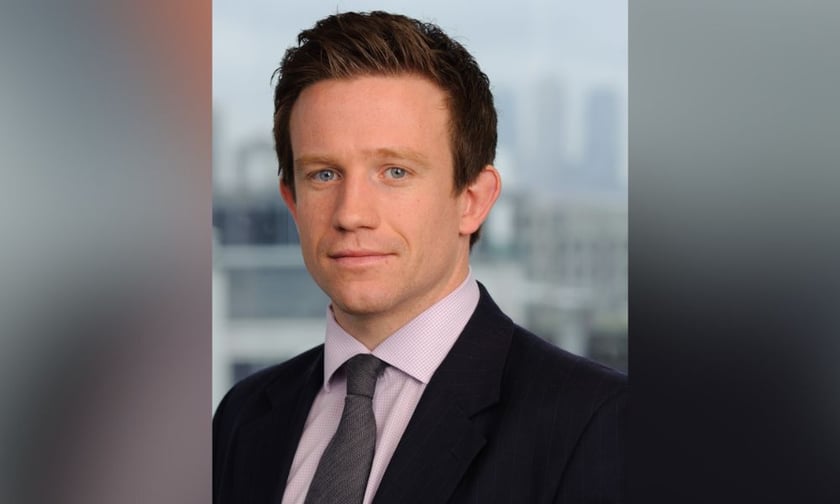

The throughline of so many insurance careers is an intersection of chance and opportunity. It was under the encouragement of a family friend that Ross Drabble, underwriting manager - Fine Art & Specie at Liberty Specialty Markets, took his first steps into the market with an entry-level role at Willis (now WTW).
His six years with the global broker saw Drabble take on roles in its fine art division, and its cash-in-transit team, before he was approached to join Liberty which was expanding its underwriting team in the fine art and specie world. It was a newly created position, he said, and one which offered the chance to do something completely different and join the underwriting world – almost a decade on, he hasn’t looked back.
As to why he stayed in the fine art and specie insurance sector specifically, he highlighted the variety of people, personalities, and products he has the chance to interact with and support on a daily basis. The risk profile of the fine art and specie world is incredibly diverse, he said, because you’re working with everything from a fine art dealer, to a major cash-in-transit company, to a mining corporation.
“The number of risks that we deal with are extremely diverse and, consequently, the people that we deal with are extremely diverse as well,” he said. “We’re working in a really interesting world where you get beneath the surface of the things in your daily life you wouldn’t otherwise really think about.
“It’s down to things as simple as the watch on your wrist which you bought from a shop without thinking about the amount of process and shipments and manufacturing involved behind the scenes. I find this sector very informative and educational, and I’m still learning new things around financing, trading, mining – facets of life that I still find very interesting to this day.”
From his time in the market, Drabble has seen first-hand the key traits that distinguish and differentiate great fine art and specie insurance professionals – among them having strong interpersonal skills. It remains a very people-driven sector, he said, despite the onward march of AI and technology, and having the right communication and people skills is as essential as ever.
“Also important is to be open-minded,” he said. “I think if you’re coming into the sector, you need to be open-minded to the opportunities that exist and to learning, and to being curious. Another thing I would say is that nothing worth having comes easy and you need to understand that you still need to put yourself out there to seize those opportunities.”
Having a strong analytical mindset and a puzzle-solving mentality is also critical to success in this market, he said, which is linked to having a willingness to learn, to ask questions, to seek out answers and to problem-solve. Something he enjoys most about the fine art and specie sector is the fact that it’s made up of people for whom this comes quite naturally, and who share a healthy work ethic and a passion for what they do.
“When I look at CVs, I recognise that they’re an indicator of capability, but also that having an academic capability is very different to how you're able to apply yourself in the workplace,” he said. “They can come hand in hand, but sometimes someone who has a very good work ethic might not have the same CV as someone else. Recognising that is something that I'm very keen on.”
Those working in this market will interact with and collaborate with a broad range of people, ages, personalities and backgrounds, Drabble said, which is why it takes each of these traits working in tandem to be a great fine art and specie insurance underwriter or broker. With that in mind, it’s critical that the makeup of the market adequately reflects the diversity of its client base which he believes is largely the case today.
Examining the makeup of the sector, he highlighted how it has changed even since he joined in 2008. Back then, career progression tended to happen quite slowly, he said, which was not a negative aspect as it underpins how critical it is to put the time, attention and learning in before handling multimillion-dollar risks and contracts.
“However, I would say it was a much more aged population in the fine art and specie market when I joined,” he said. “When I look at it today, the demographic is extremely different. It’s much younger, there are more people coming from graduate programmes, and school leaver programmes.
There’s a strong pipeline of young talent in the market, he said, which, in turn, is allowing people to take on more responsibilities earlier in their careers and progress more rapidly. What’s also interesting to note, particularly in the fine art insurance element of the sector, is that more people are coming into the market from the fine art industry itself – drawn in by the career growth opportunities they’re seeing in insurance.
“People are now seeing a career in fine art insurance as a respectable career progression opportunity,” he said. “[While] in yesteryears, it maybe wouldn’t have been something people in the fine art world would necessarily see as an opportunity equal to what they were doing already.
“I’d say that’s very much fine art specific because that’s where you tend to see people with that subject matter passion. I don’t think you’d find anyone who studied a cash in transit degree or the like, so in those parts of the market you find people who have built up either an interest, a knowledge base or a client base - and it’s much more of a natural, evolving pipeline.”
